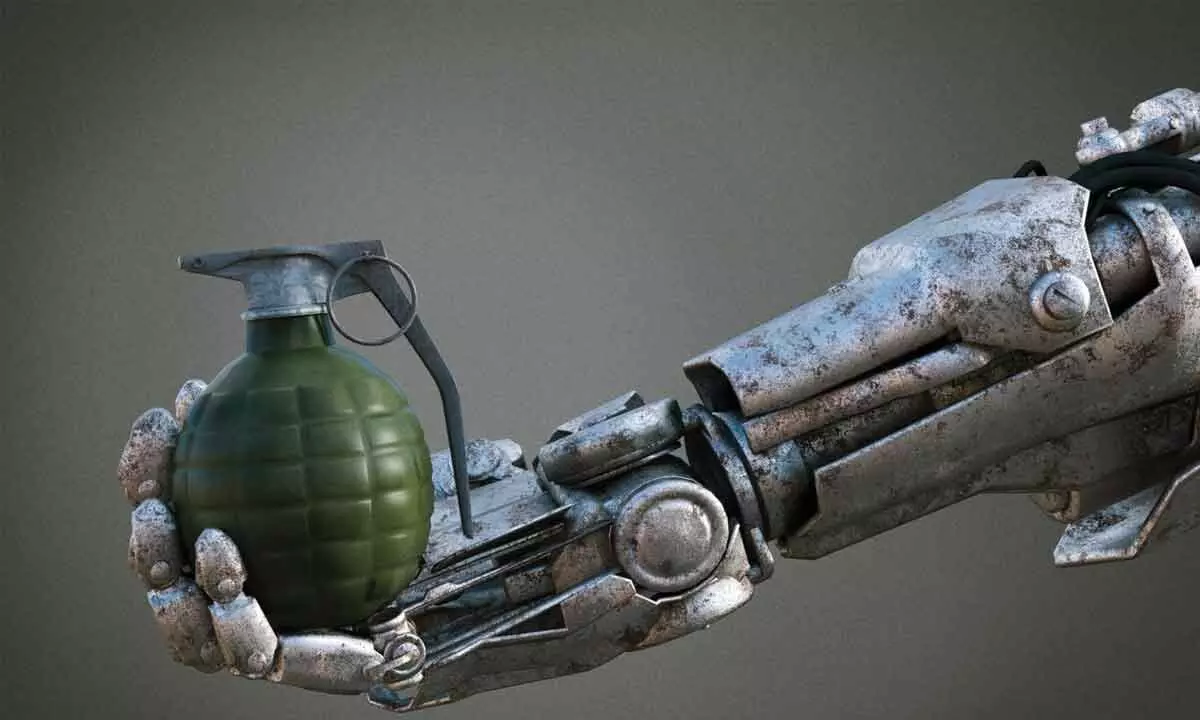What does future warfare look like?
It may be that in 2045, we’ll see the battlefield as an integrated arena, in which AI-enabled autonomous systems and conventional forces work interoperably
image for illustrative purpose

While billions of dollars are being spent on advanced fighter systems, like the F-35, terrorist groups such as Daesh can 'print' thousands of low-cost drones – via 3D printing – which could be armed with conventional or biological weapons, potentially causing more damage than an F-35.
Experts argue that military force is still fundamentally about utilizing methods to control territory and people – and that is not going away anytime soon. Cyber attacks don't control territory, they are supplements.
The current trend towards multipolarity is also marked by a diminution of attrition warfare as a means to achieve a political settlement. This means that the wars of yore, which involved manned platforms such as tanks, aircrafts and infantry will slowly be interspersed with those involving standoff weapons, unmanned systems, cyber-attacks and disinformation campaigns. In the past, occupation of territory (long considered the sine qua non of such war-fighting), resulting in politically negotiated settlements, was dependent on the staying power of the victor's forces over its adversary's lands. This is no longer the case, given the lack of distinct demarcations between war and peacetime. As a result, the world is now in persistent conflict and controlled offensives.
Ironically, countries are developing increasingly autonomous weapon systems powered by machine learning and AI, whose key aim is to provide at "machine speed" a plethora of options to theatre commanders, for quick and lethal strikes against enemy targets. The character of warfare has changed as a result. States that matter geopolitically enjoy this respite almost exclusively; however, they are also likely to engage in wars as technology demonstrators or proof of concepts for their own operational innovations and platforms.
Thus, a future-ready force needs to be small, modular, networked and capable of Potent Force Quick Time (PFQT) operations, i.e. based on the symbiosis between the three services, but also manned-unmanned teaming (MUMT), where complementary teams of human operators and unmanned vehicles and drones carry out heavy and time-compressed strikes against adversary positions, preferably from stand-off distances.
Currently, the Defence Cyber Agency (DCA) is a tri-services organisation that reviews in a centralised manner the Indian Armed Forces' offensive and defensive capabilities in the cyber domain. A disaggregation, at least starting at the level of Theatre Command HQ, will be necessary to incorporate these capabilities into the Theatre Commanders' respective military plans. ETCs can leverage capabilities in cyber and IW domains for future war-fighting, both in the short and long term.
It is imperative that the Indian Armed Forces include specialists in domains such as cyber, AI, linguistics, public relations, unmanned platform operators, robotics, space, and electromagnetic spectrum. By 2030, these subjects are likely to form a crucial part of non-contact warfare.
The future of warfare is unmanned. Despite being a societal interaction that is singly human, war-fighting will be dominated by unmanned platforms in all three domains of land, air, and water. Unmanned aerial vehicles (UAVs), armed and unarmed, will dominate the skies in the near to long term, with a heavy emphasis on autonomy, bio-inspiration, miniaturisation, and swarms. UAVs will also bridge the gap between the Indian Army and the Indian Air Force's aerial requirements. As long-range vectors, armed UAVs will slowly and steadily diminish the requirements of artillery guns, and close-air support aircraft. Different variants of UAVs will act as communication relays for networked troops, jammers, and ISR, amongst others. On the naval side, UUVs will be used in Humanitarian Assistance and Disaster Relief (HADR) operations, decoys and armed "smart" torpedoes against bigger ships of the adversary. On land, unmanned drones will be used as load-carrying transports for ground troops in difficult terrains, minefield traversing, IED detecting and defusing, amongst other tasks.
With the impending move of social media towards a metaverse, Virtual Reality and Augmented Reality training will take priority.
The future force will ideally be completely digitised, as the only way to utilise and exploit niche and emerging technologies is through the computerisation and generation of data, followed by the standardisation of data labels, collection, collation and analysis of data. Such a process will allow the three services to be "plugged" into a common system with adequate built-in safeguards. Combined with the Indian Armed Forces' cloud system, BADAL (Bulk Accumulation of Data for Automation and Learning), this setup will provide theatre commanders and the subordinate cyber/space departments to undertake informed and integrated offensives. The new technology provides more powerful weapons with long-range strike capabilities, and this can also change the face of future warfare. It may be that in 2045, we'll see the battlefield as an integrated arena, in which AI-enabled autonomous systems and conventional forces work interoperably.

